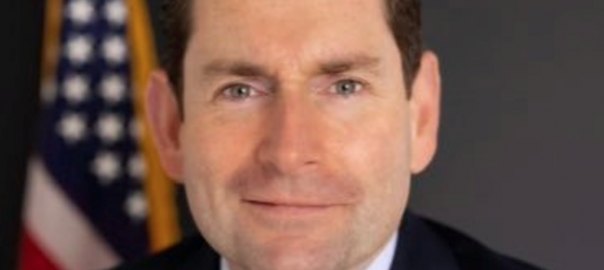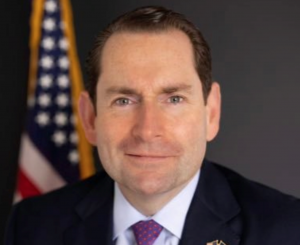
Senate Majority Builds on Gov. Hochul’s Strong Foundation; Historic Opportunity to Fix New York’s Infrastructure
The federal Infrastructure Investment and Jobs Act—often referred to as the Bipartisan Infrastructure Bill—was a major achievement that delivers the greatest federal commitment to improving the nation’s roads and bridges since President Dwight D. Eisenhower built the federal interstate highway system.
For New York, it means $13.4 billion for NYSDOT capital needs over the next five years—an incredible increase of $4.6 billion or 52% over prior federal funding levels. The federal infrastructure bill has given New York a singular opportunity to finally get our roads and bridges into good repair, but do that, leaders in Albany will need to step up in the state budget.
Governor Hochul’s Executive Budget Proposal in many ways provides a strong starting point and she is to be commended for clearly placing infrastructure as a priority. In particular, we are pleased to see a fully funded, five-year NYSDOT Capital Program. The Governor continues and builds upon record funding levels for local governments through the CHIPS, Marchiselli PAVE-NY and BRIDGE-NY programs, as well as continuation of the new State Touring Routes program.
In their one house budget bills both houses of the Legislature have proposed adding additional funding for the NYSDOT Capital Program. In particular, the Senate Majority has advanced a bold, visionary, needs-based plan to fully fund the Capital Program in a way that maximizes the opportunity created by the infrastructure bill to finally move New York’s roads and bridges toward a state of good repair.
The Senate Majority’s plan adds $2 billion in bonding authority to allow the core NYSDOT Capital Program to grow by an additional $10-12 billion over its five years—and also adds $300 million on top of the Governor’s proposal for local roads. The Senate also includes funding to help localities better deliver projects by providing seed money for scoping and design.
The Senate’s proposal is the pathway to drive real improvements to the state of NYSDOT’s statewide network of roads and bridges. Majority Leader Stewart-Cousins and her colleagues are to be commended for advancing such a forward-looking proposal. In particular, Senator Tim Kennedy of Buffalo, Chair of the Senate Transportation Committee, has yet again proven to be an outstanding leader and advocate for New York’s transportation infrastructure.
The Senate Majority’s Highway Plan Delivers for all New Yorkers:
- Doubles the amount going directly to New York City annually for its for its roads and bridge from $364 million to $683.3 million, a $1.59 billion increase over five years.
- Increases highway funding to the rest of the State’s Counties, Cities, Towns and Villages annually from $970.6 million to $1.708 billion, a $3.6 billion increase over five years.
- Increases infrastructure funding for State’s roads and bridges from $2.3 billion annually to $3.6 billion, a $6.5 billion increase over the five-year plan.
Beyond being sound policy for the maintenance of our infrastructure, making these investments now is also sound fiscal policy. Deferred maintenance and repair means more extensive treatment repair and construction will be needed later at a higher cost—it costs as much as 16 times more to repair a road that has fallen into poor condition. The reality is, either we fix it now or pay more to fix it later—when we won’t have another massive influx of federal funding.
It is also sound economic policy. Investing in infrastructure is a proven job creator—it not only creates direct, good paying, prevailing wage jobs, but helps support the broader economy. According to the national transportation research group TRIP, “Approximately 3.5 million full-time jobs in New York in key industries like tourism, retail sales, agriculture and manufacturing are completely dependent on the state’s transportation network.” A key purpose of the infrastructure bill is economic stimulus and job creation. After all, it is called the Infrastructure Investment and Jobs Act.
Further, investing in our roads and bridges builds a foundation for a stronger future and aligns with other key priorities of Governor Hochul and the Legislature. For instance, as New York forges ahead as a national leader in clean energy, with an aggressive push toward zero emissions vehicles (ZEVs), our roads and bridges need to be ready and up to the task. More electric cars, buses and trucks on the road mean heavier vehicles—sometimes much heavier—and more wear and tear on pavements and bridges. Pavements already in increasingly poor condition as we see across the state will not fare well under the weight of these vehicles.
Washington has given us the resources and a generational chance to truly rebuild our infrastructure, reversing decades of decline, bringing our roads and bridges to a state of good repair and creating and supporting tens of thousands of jobs in the process. We cannot miss that opportunity. Governor Hochul has provided the foundation in her Executive Budget Proposal—and the Senate has advanced a plan to perfect it.
New Yorkers should not be driving on roads that could double for the surface of the moon; driving your kids to school should not be like running a slalom course.
This is it. There won’t be another historic infrastructure bill in five years. The opportunity to really turn the tide of crumbling infrastructure is now or very likely never in our lifetimes. Our economy, our future and our communities depend on it. The Governor and Legislature are almost there and must seize this moment. It will pay dividends for New Yorkers for decades to come.
We can Rebuild New York—now.
Mike Elmendorf is President & CEO of the Associated General Contractors of New York State (AGC NYS), New York’s leading statewide construction industry association, and President of Rebuild NY Now, a broad-based coalition that includes business, labor, municipalities and others advocating for increased infrastructure investment.

